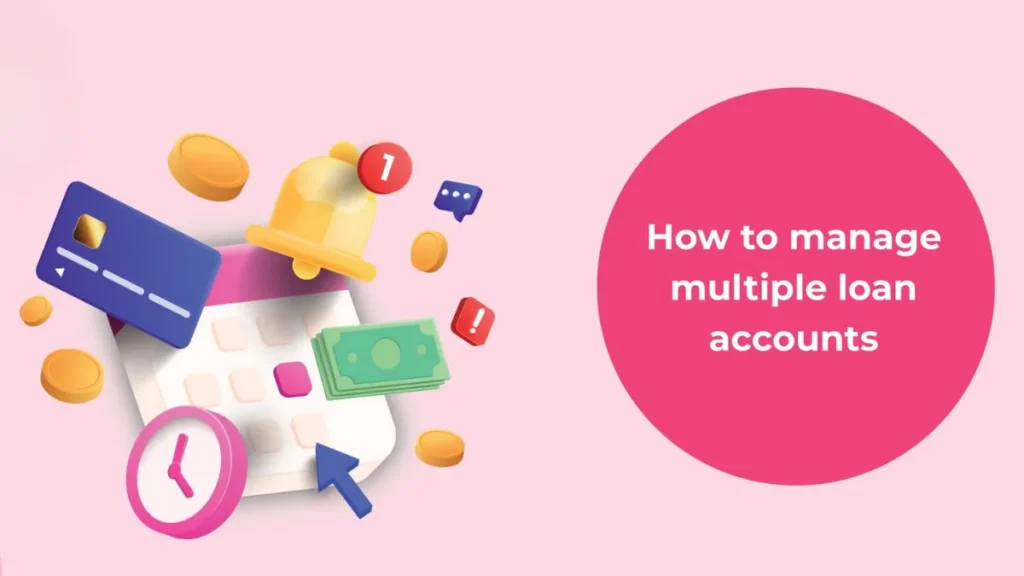Managing one loan is a responsibility, but juggling multiple loans—such as a car loan, personal loan, student loan, or a home loan—requires extra vigilance. Without a proper system, it’s easy to lose track, miss due dates, and accumulate late fees, which can negatively affect your credit score and financial future. The good news? With the right strategies and tools, managing multiple loan accounts without missing a payment is entirely doable.
This guide will help you understand how to stay organized, prioritize payments, and build healthy habits that will keep your financial life on track.
Why Managing Multiple Loans Can Be Challenging
Overlapping Due Dates
Different loans often come with different payment cycles and due dates. Tracking each one manually can be confusing and may result in overlooked deadlines.
Varying Interest Rates
Each loan may have a different interest rate, making it harder to decide which one to focus on paying off first.
Risk of Missed Payments
When you’re dealing with multiple accounts, it’s easy to miss one, especially if there’s no automated system in place.
Mental Stress and Financial Pressure
Balancing different payments can lead to anxiety, especially when your income is fixed or irregular. Poor management could snowball into larger debt or even default.
Step-by-Step Strategies to Manage Multiple Loan Accounts Successfully
1. List All Your Loans in One Place
Create a master list or spreadsheet that includes:
- Loan type (home, car, personal, etc.)
- Lender name
- Outstanding balance
- Interest rate
- EMI amount
- Due date
- Payment method (auto-debit, manual, etc.)
This acts as your central dashboard for managing everything in one view.
2. Understand Each Loan’s Terms
Knowing the terms of each loan helps you plan efficiently. Look at:
- Penalties for late payments
- Grace periods
- Prepayment options
- Annual charges or fees
This knowledge will help you make smarter decisions like which loans to close early or refinance.
3. Prioritize High-Interest Loans
Focus extra payments on high-interest loans first while maintaining minimum payments on the rest. This strategy, known as the avalanche method, helps you save more in the long run.
Alternatively, if you need quick wins to boost motivation, consider the snowball method—where you pay off smaller loans first for a psychological boost.
4. Automate Your Payments
Set up automatic payments through your bank or loan provider for each EMI. This eliminates the risk of forgetting due dates and saves you from penalties and damage to your credit score.
Make sure to maintain a buffer in your account to avoid failed transactions.
5. Sync All Payment Dates (if possible)
If your lenders allow it, consider shifting all payment due dates to a common date—like the 5th or 10th of each month. This simplifies budgeting and reduces mental clutter.
6. Use Financial Management Apps
There are many budgeting and reminder apps available that let you:
- Track loan repayments
- Set alerts for upcoming EMIs
- Monitor credit scores
- Analyze spending habits
Apps like Mint, Walnut, or custom spreadsheet tools can give you insights and control over your finances.
Smart Budgeting: The Key to Managing Multiple Loans
Allocate a Monthly EMI Budget
Plan your monthly income and allocate a fixed portion for loan repayments. Experts recommend keeping total EMIs under 40% of your net income for better cash flow and peace of mind.
Cut Down on Unnecessary Expenses
Identify and eliminate non-essential expenses like subscriptions or impulsive purchases. Direct those savings toward your loan EMIs.
Build an Emergency Fund
Having 3-6 months’ worth of expenses saved gives you a cushion in case of unexpected job loss or medical emergencies, reducing your chances of missing a payment.
Consider Loan Consolidation (If Applicable)
What is Loan Consolidation?
Loan consolidation means combining multiple smaller loans into one larger loan, ideally with a lower interest rate.
Benefits of Consolidation:
- Single monthly payment
- Lower interest rates (if eligible)
- Easier to track
- Can improve credit score over time
However, be cautious of fees, and ensure that the consolidation doesn’t extend the term unnecessarily or result in higher overall interest paid.
Regularly Monitor Your Credit Score
A good credit score opens the door to better refinancing options and loan offers. Monitor it regularly using credit apps or credit bureaus. Any missed payment—even a small one—can affect your credit rating.
Also, reviewing your credit report periodically helps you catch errors or fraudulent activities in time.
Communicate With Lenders in Case of Trouble
If you anticipate missing a payment, don’t wait for the due date. Reach out to your lender immediately. Many lenders offer:
- Temporary payment relief
- Loan restructuring
- Grace periods
Being proactive demonstrates responsibility and could help you avoid long-term damage.
Habitual Tips to Stay On Track
Weekly Check-ins
Dedicate 10-15 minutes weekly to review your budget and upcoming payments. This helps spot problems early.
Use Email or SMS Reminders
Even if you automate payments, set calendar reminders or SMS alerts for upcoming EMIs.
Keep a Physical Checklist
If you’re someone who enjoys writing things down, keep a physical chart or calendar on your desk to cross off payments.
What to Avoid When Managing Multiple Loans
- Ignoring your debt – Denial won’t make it disappear; in fact, it worsens the situation.
- Taking new loans unnecessarily – Avoid piling on debt unless it’s a calculated move.
- Relying entirely on credit cards – Don’t use credit cards to pay EMIs unless there’s no alternative—and be cautious of the fees.
Benefits of Managing Loans Effectively
- Improved credit score
- Lower stress and anxiety
- Better financial future
- Eligibility for better credit terms
- Peace of mind and financial confidence
Conclusion
Managing multiple loan accounts without missing a payment might seem overwhelming at first, but with a structured approach, it becomes completely manageable. The key lies in planning, automation, budgeting, and regular review. Whether you’re repaying a student loan, mortgage, or personal debt, staying organized and being proactive can ensure that your financial health stays strong—today and in the future.
Remember, small consistent steps are better than last-minute struggles. Take control, build a system, and enjoy the peace that comes from being financially responsible.
Frequently Asked Questions (FAQs)
Q1: What’s the best method to pay off multiple loans faster?
The avalanche method—paying off the highest-interest loan first—is usually the most cost-effective. But the snowball method (starting with the smallest loan) may be better if you need quick motivation.
Q2: Can I shift my loan EMI dates to one common date?
Yes, many lenders allow you to request a change in the due date, but approval depends on the lender’s policy.
Q3: What happens if I miss a loan payment?
You may face penalties, increased interest, and damage to your credit score. Frequent misses can even result in loan default.
Q4: Are financial apps safe for tracking loan payments?
Yes, most are secure and use encryption. Stick to well-reviewed and trusted apps from official app stores.
Q5: Is loan consolidation a good idea?
It can be—especially if it lowers your overall interest rate and simplifies your payments. Always read the fine print before proceeding.



